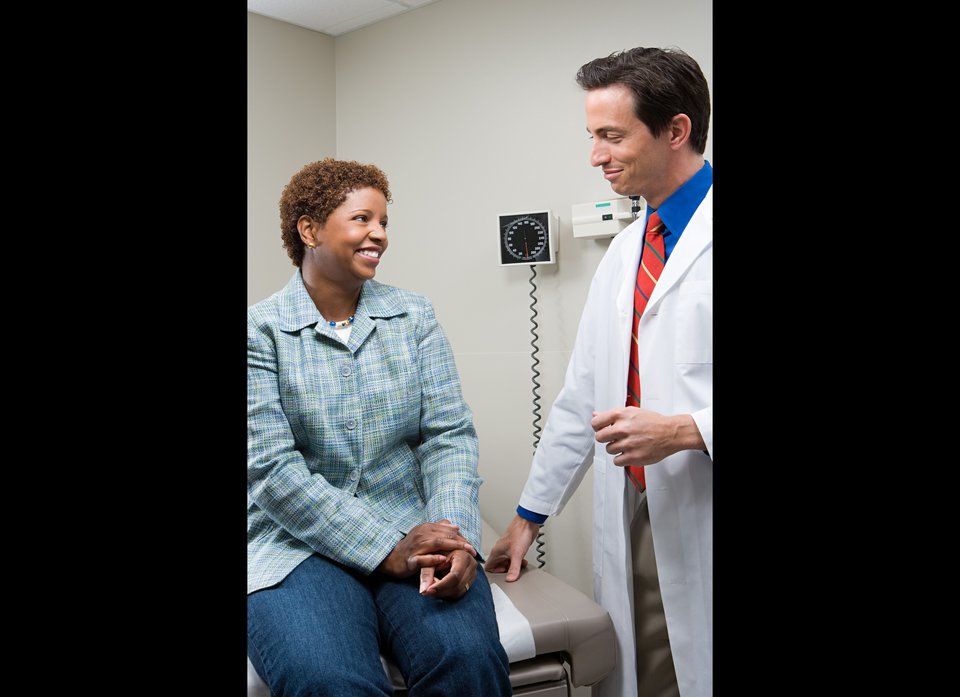
The issue of treating Parkinson’s disease is becoming increasingly relevant as the number of people suffering from this chronic neurodegenerative disease increases. Symptoms of the disease, such as decreased muscle control, trembling, and slow movement, have a significant impact on patients’ quality of life. As a result, there is increasing interest in various methods of treating and managing this condition in scientific and medical circles. Let’s look at the main approaches to treating Parkinson’s disease and their effectiveness.
Treatment of early stages of the disease
In the early stages of Parkinson’s disease, treatment is aimed at restoring impaired function with minimal use of medications. Amantadine, dopamine receptor agonists (Pramipexole, Piribedil), and selective MOA-B inhibitors (Selegiline) are usually prescribed. These drugs stimulate the synthesis of dopamine, block its reuptake, activate dopamine receptors, inhibit its breakdown and prevent the death of neurons. Although they are less effective than Levodopa derivatives, they are effective in controlling symptoms in the early stages.
Dopamine receptor agonists could theoretically delay the use of levodopa and reduce its dosage in later stages of the disease. However, they have many side effects, and the question of starting Levodopa right away is often raised. When selecting medications, the doctor takes into account the patient’s age and his reaction to the medications.
Treatment of advanced forms of the disease
Treatment for advanced Parkinson’s disease is more difficult. The disorders progress, new symptoms appear that are poorly responsive to drug therapy. The effect of Levodopa decreases, and drug-induced dyskinesias occur.
The on-off phenomenon requires increasing the dose of Levodopa, which leads to new problems. Doctors sometimes add a COMT inhibitor or switch to therapy with Stalevo tablets.
If depression, insomnia or mental disorders develop, the patient is referred to a psychiatrist. Sometimes reducing the single dose of Levodopa while maintaining the daily dose helps stabilize the condition.
The following can also be used in treatment:
Antipsychotics, such as Reminyl, Exelon, Seroquel, Azaleptin, Clozapine, Leponex, to combat hallucinations.
Motor stimulants, including Duphalac, Linex, Motilium, to improve autonomic functions.
Antidepressants and sedatives.
Antispasmodics, such as No-shpa, Detrusitol, Spazgan, to relieve spasms.
Drugs for speech restoration, such as Taknakan, Akitanol, Vinpocetine, Exelon.

Surgery
Surgical treatment for Parkinson’s disease is a serious step and may include the following methods:
Electrical stimulation of certain areas of the brain that control motor activity. Electrodes are inserted into the corresponding brain structures and connected to a neurostimulator implanted under the skin in the chest area. This procedure can slow the progression of the disease and significantly improve the patient’s quality of life.
Destruction of certain brain structures. Thalamotomy, the destruction of certain nuclei of the hypothalamus, can help eliminate tremor, and pallidotomy, the destruction of a portion of the basal ganglia, helps normalize motor function. However, these methods are high-risk and can cause serious side effects, so they are used only in extreme cases.
Surgery for Parkinson’s disease is a complex process that requires careful assessment of the benefits and risks for each individual patient.
Folk remedies
Treatment of Parkinson’s disease with traditional methods may include the following recipes:
Oat decoction: Pour a glass of unrefined oat grains with three liters of clean cold water and simmer over low heat for an hour. Drink chilled instead of regular water.
Herbal baths: Add a decoction of thyme and sage to the bath. The session lasts up to one and a half hours. It is recommended to carry out up to 10 procedures.
Propolis: Chew a small piece of propolis twice a day after meals for an hour and a half. The duration of the course is 30 days.
Herbal tea: Mix bay leaves, rose hips, parsley and chrysanthemum flowers in equal proportions. Pour boiling water over it and leave in a thermos. Drink the decoction 2-3 times a day for 45 days, then take a two-week break.
These methods can be used as an adjunct to drug therapy for Parkinson’s disease, but consultation with a doctor is always recommended before starting any treatment.
Important factors contributing to recovery
Preventing Parkinson’s plays an important role in taking care of your health. Although scientists don’t yet have a complete understanding of how to prevent Parkinson’s disease, some tips can help reduce your risk of developing it.
- Regular exercise
An active lifestyle and regular exercise are especially important for people with Parkinson’s disease. They help improve coordination and flexibility, which helps more effectively cope with the characteristic symptoms of the disease.
Reducing muscle stiffness is especially beneficial, as physical activity helps stretch tight muscles, reduce spasms, and improve range of motion. In addition, exercise helps improve overall physical tone and energy levels, which has a positive effect on mental health: activity promotes the production of endorphins, which improves mood and reduces stress, which is especially important for patients with Parkinson’s disease.

Many doctors notice a slower progression of symptoms in patients who exercise regularly. It is important, however, to consult a doctor before starting any physical activity to choose the appropriate exercises, taking into account the individual characteristics of the disease and the patient’s physical condition.
- Balanced diet
A balanced diet plays a key role in preventive measures against Parkinson’s disease, providing patients with essential nutrients and helping to manage symptoms. It is important to eat a diet that promotes overall health and well-being.
Regular consumption of foods rich in antioxidants is one important aspect. Vegetables and fruits are excellent sources of vitamins and minerals, helping to protect cells from oxidative stress. Dark green vegetables, berries and citrus fruits are especially useful.
It is also important to include foods rich in protein in your diet. Protein helps maintain muscle mass, which is especially important in Parkinson’s disease. Fish, poultry, dairy products, beans and nuts are excellent sources of protein.
Limit your intake of saturated fats and sugars to help control your weight and maintain cardiovascular health. Replacing saturated fats with unsaturated fats, such as those found in olive oil, provides additional benefits.

It is also important to monitor your vitamin D levels, as some patients with Parkinson’s disease may be deficient. Vitamin D is essential for bone health and may have a positive effect on nervous system function. The menu of a patient with Parkinson’s disease may include cod liver oil, egg yolk, trout, dairy products and mushrooms.
Eating regularly can help manage problems such as dysphagia (difficulty swallowing) that can occur with Parkinson’s disease. Foods that are easy to swallow and rich in nutrients can make digestion easier. However, each patient is unique, and individual nutritional recommendations may vary.
- Getting essential vitamins and minerals
The relationship between the gut and the brain plays a key role in maintaining human health. These organs interact through complex chemical processes. A healthy gut with an optimal balance of beneficial bacteria plays an important role in the prevention of Parkinson’s disease.
Related: Early Parkinson’s
Metabiotics can be used to support gut health and therefore brain health. Restoring the correct balance of intestinal microflora has a beneficial effect on brain function.
- Preventing stressful situations
Stress can be very destructive. Every cell in the body suffers from its effects, and even the slightest overexertion leaves a mark on the body. Stress causes the release of the hormone cortisol, which, with regular or prolonged exposure, depletes the adrenal glands. This in turn can lead to a decrease in brain volume and memory impairment.
Stress can be considered a risk factor for the development of brain-related diseases. Therefore, stress management becomes an integral part of managing Parkinson’s disease, contributing to both the physical and emotional health of the patient.

Avoiding stress in Parkinson’s disease is important for several reasons:
Effect on symptoms: Stress can increase characteristic symptoms of the disease, such as trembling, muscle stiffness and slow movements. Stress management can help improve control of these symptoms.
Psychological Condition: Parkinson’s disease can cause emotional difficulties, including depression and anxiety. Stress only exacerbates these problems, so reducing it is important for overall psychological well-being.
Quality of life: The level of stress directly affects the quality of life of a patient with Parkinson’s. Eliminating stress can improve your comfort level and overall well-being.
Relationship with exacerbations: Stress can trigger an exacerbation of Parkinson’s symptoms. Preventing stress helps reduce the risk of exacerbations and improve the course of the disease.
Impact on the immune system: Stress negatively affects the immune system, which is especially undesirable for people with chronic diseases, including Parkinson’s.
Treatment of Parkinson’s disease is a multifactorial process that requires an integrated approach. During this article, we reviewed various methods and approaches to the treatment of this neurodegenerative disease. At our Neuro Implant Clinic, we strive to provide patients with a comprehensive approach to the treatment of Parkinson’s, including modern medical methods, an individual approach to each patient and constant adherence to the principles of effectiveness and safety.
At Neuro Implant Clinic we strive to improve the quality of life of patients with this disease. With our treatment, we aim to minimize symptoms and make everyday life easier for our patients. Find out more about our procedures by visiting neuroimplantclinic.com, calling +34 656 500 167 or emailing [email protected].














